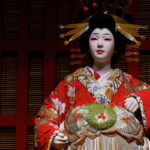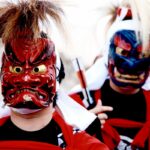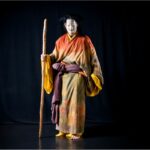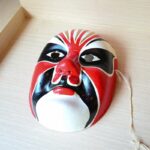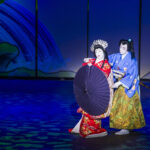The Kabuki mask is an iconic trait when it comes to traditional Japanese theater. So much so, you might be wondering what a Kabuki mask actually is.
A Kabuki mask is used to portray different characters – more often than not those with exaggerated expressions. For example, demons and gods. However, there are more to these masks than meets the eye.
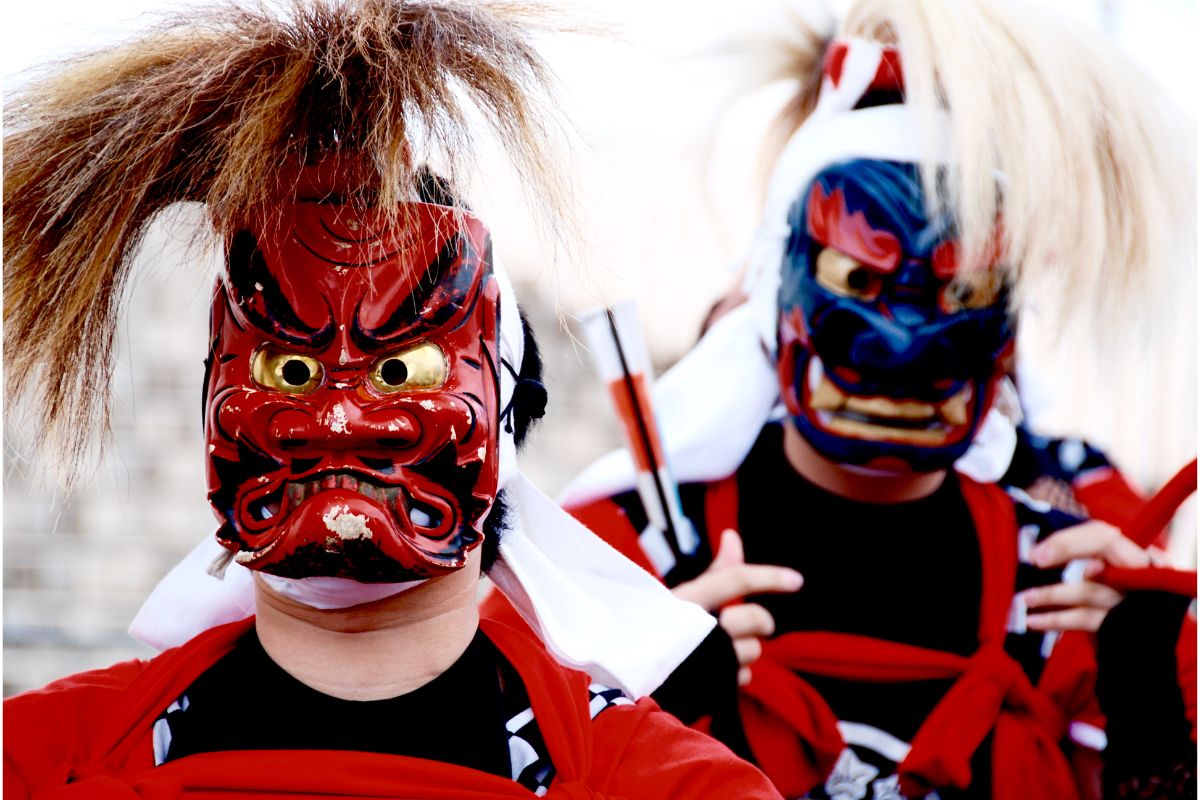
They are worn by Kabuki-mono – otherwise known as people of Kabuki – who perform in traditional Japanese theater. The different colors of the Kabuki mask also represent a plethora of meanings.
For that reason, let’s take a look at all you need to know about Kabuki masks.
What Is Kabuki?
Kabuki is recognized as a traditional Japanese style of performance. It has been performed for many centuries. It contains a few different elements too. These are acting, dancing and singing.
In fact, the word ‘Kabuki’ is based on the three characters ‘ka’, ‘bu’, and ‘ki’ which mean ‘song’, ‘dance’ and ‘art form’.
The staging in Kabuki is always fascinating – as are the costumes. The designs can be very elaborate. However, one thing is for sure: it is most certainly traditional Japanese.
Why Was Kabuki First Performed?
It is said that Kabuki first began in the 1600s. Originally it was a way to entertain the people who were classed as common. Despite this, as time went on it became enjoyed by those in the upper classes too.
As centuries passed, Kabuki became very prestigious. It is now widely recognised as a highly regarded and respected form of theater within Japan.
Even today, people love Kabuki for being a prestigious and traditional art form. It often feels like you have stepped back in time when watching a Kabuki performance.
What Actually Is A Kabuki Mask?
Used in traditional Japanese theater, a Kabuki mask is often highly exaggerated when it comes to expressions. It is also ornate in its design. It is used to portray emotions and different characters on stage.
The Kabuki mask is also an iconic part of traditional theater in Japan. It is often the first thing people think of when it comes to this kind of theater.
The Kabuki mask itself can be made from cloth, wood or lacquer. It is also decorated with many things, from sequins and golf leaf, to feathers and paint.
There are several different types of Kabuki masks too. They portray lots of characters. This ensures that the audience knows who the character is on stage. For example, it could be a historical figure, or even a demon or an ogre.
Some of these masks have particular iconic shapes and designs. Because of this, the audience will know that the actor is portraying a character like a fox for example.
Is There A Purpose For Wearing A Kabuki Mask?
The main purpose of wearing a Kabuki mask is for the audience to be able to understand what the emotions are of the character. This is due to the colors used and the exaggerated expression.
However, the Kabuki mask also helps the audience to recognize who the character is. It can also be used to provide some comedy too. For these reasons, there are many purposes when it comes to wearing a Kabuki mask.
Are Kabuki Masks Unique?
Yes, Kabuki masks are unique. They are a type of mask used in theater performances to exaggerate the appearance of an actor. They also play an important role when it comes to Japanese history and culture.
The Kabuki mask is recognized by millions of people across the world. The Kabuki mask is also iconic and very traditional to Japanese theater.
Are There Different Types Of The Kabuki Mask?
There are many different kinds of Kabuki masks that are worn on stage. The reason for this is because there needs to be different characters available to represent via wearing a mask.
However, there are some common types of Kabuki masks that are worn. These include the ogre, the Kitsune (also known as fox), and the demon.
Kitsune is a spiritual type of fox that is talked about in many Japanese tales. It can blend into the crowd without anyone knowing. It also has the ability to be a male or a female. A kitsune is often represented in Kabuki theater.
The demon mask often portrays an evil character, while the ogre might be based on a powerful or large character.
The Kitsune on the other hand mainly portrays characters who are sly and cunning. Those who enjoy Kabuki will already know what these masks represent. This is the reason they are used a lot in performances.
What Do The Colors Represent On A Kabuki Mask?
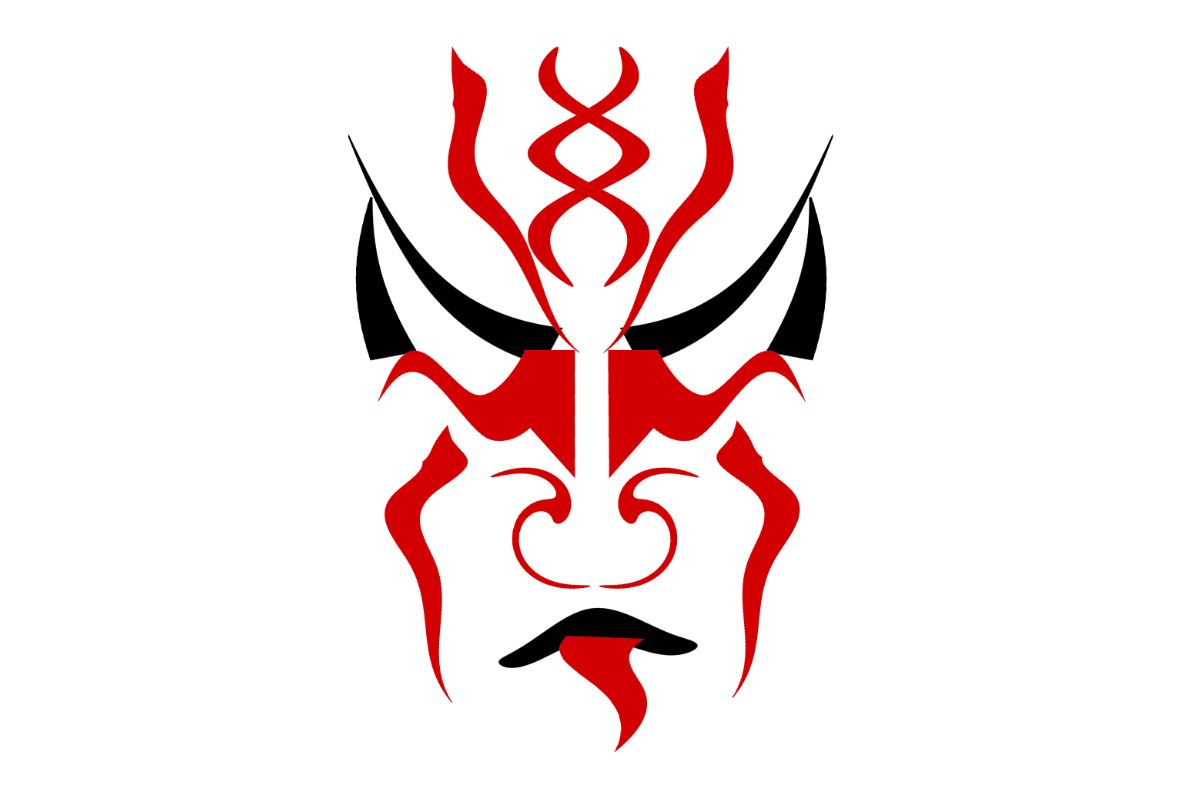
There are some common colors when it comes to Kabuki masks. Each one of the colors have a meaning. The main colors used for Kabuki masks are:
- White – represents purity and honesty.
- Black – represents death, darkness or evil.
- Green – represents a new beginning, fresh, or youthful.
- Red – represents violence, anger or passion.
- Gold – represents extravagance or wealth.
When Is A Kabuki Mask Worn?
The majority of the time Kabuki masks are only worn for performances. However, there are also many parades and dances that happen throughout Japan where the Kabuki masks are also worn.
It is a great way to see Kabuki masks other than seeing a theater performance. Though it is always good to see traditional Japanese theater in all its glory.
What Is The Correct Way To Wear A Kabuki Mask?
There is no correct way to wear a Kabuki mask. However, you will want to wear it with some form of costume rather than on its own.
A Kabuki mask is worn to show the expressions of a person and to help reveal the type of person that character is. Because of this, a Kabuki mask is often worn with a very stylized and exaggerated wig and costume.
Everything worn together completes the overall look of the character you see up on stage.
Is Makeup Worn With A Kabuki Mask?
Sometimes makeup is also worn alongside a Kabuki mask. The makeup is known as Kumadori. It is a type of face painting that is used to emphasize veins and muscles upon the face.
‘Kuma’ is a term which is in reference to how light reflects on the skin to cause a shadow. So this is the reason makeup is used to exaggerate how the light hits the skin on the face.
One example of this is cheekbones. Even within modern makeup techniques, a darker color is used to emphasize where the cheekbones are. In Kabuki, this is done to make a person look gaunt or have an exaggerated expression.
Final Thoughts
A Kabuki mask is often worn in traditional Japanese theater. It is worn to show the exaggerated expressions of a character. It also can reveal exactly who the character is. For example, it may be a demon or a fox.
These have personality traits that can give the audience a sense of understanding. For example a demon is an evil character, while a fox is often cunning.
The Kabuki mask also adds an extra element to a character too, along with the hair and clothing.
- 16 Best Websites To Watch Japanese Movies With English Subtitles - May 11, 2023
- Is ZIPAIR The Best Airline For Traveling To Japan? - May 11, 2023
- Ryu Murakami Vs Haruki Murakami – Which One Should You Read? - May 11, 2023

